Introduction:
NASA’s Langley Research Center (LaRC) needed to test its current planning activities against a longer-term view of the external future. To do this, NaRC asked the Houston Foresight program to collaborate on the development of a set of longer-term external scenarios on the future of work. The goal was to stretch thinking out to the world of work in 2050 and then “bring it back” to a strategic approach and initiatives that could be started in the present.
The project used scenario planning to create long-term views of the future of work. The scenarios will be used to “wind tunnel” the current plans and activities of NASA and enable them to make the appropriate adjustments to their current strategy.
The Houston Foresight team consisted of Andy Hines (PI), alum Maria Romero (Project Manager), and students Tim Morgan, George Paap, and Mathew Palubicki.
The Houston team used the Houston Foresight Framework over the course of one semester to develop scenarios and recommendations for NASA.
The principal components of the project include:
Each of these components will be touched on in this brief.
Scanning
Scanning captures the “signals of change” in a domain, known as scan hits. The team collected over 200 scan hits suggesting changes in the future of work. The search was guided by a domain map of key categories to explore, seen in the figure below.
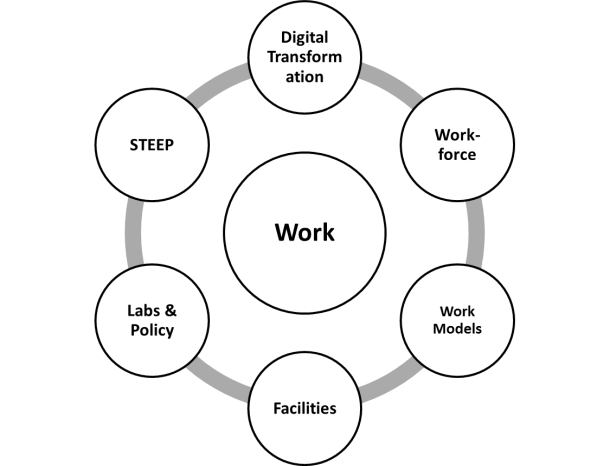
The six categories:
- Digital transformation includes AI, scientific computing, security, and work “activities” influence by digitization.
- Workforce includes automation, augmentation, robotics, jobs, and roles.
- Work models includes business models, partnerships models, and other ways or organizing LaRC’s work.
- Facilities includes the physical and virtual infrastructure of offices, shared spaces, and labs
- Labs & Policy includes civil service, public funding, policy, and organizations in the system
- STEEP includes social, technological, economic, environmental, and political factors to cover general developments in the context outside of work.
Drivers
Scenario planning in general relies upon identifying the key “drivers” of change. Drivers are perhaps best described as thematic clusters of related trends and developments, found in the Scanning phase, that will drive or influence change in the future.
The drivers identified for this project are in the table below
|
Digital transformation |
|
|
|
|
|
|
|
|
|
|
|
|
Workforce |
|
|
|
|
|
|
Work models |
|
|
|
|
|
|
|
|
Facilities |
|
|
|
|
|
|
|
|
Labs & policy |
|
|
Scenarios
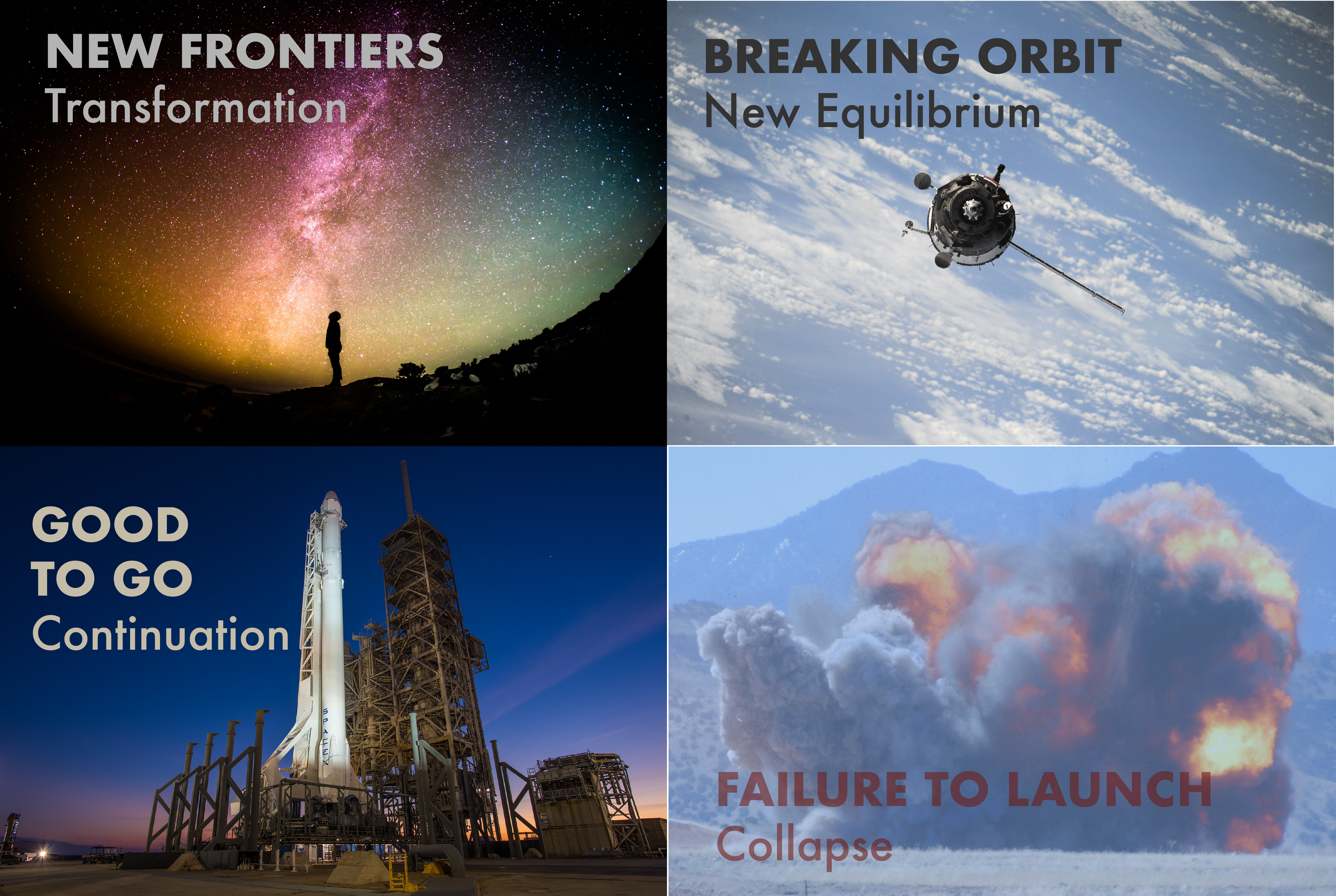
The scanning and drivers provide a foundation for developing scenarios. The scenarios suggest how the changes identified in the scanning and the drivers could plausibly come together in a range of future outcomes.
Houston Foresight uses the scenario archetype approach developed by futurist Jim Dator that we have made some small tweaks to. Four main patterns characterize the movement of a system over time:
- Continuation: baseline extrapolation of present into the future
- Collapse: system stuck in dysfunction
- New Equilibrium: challenge to system leads to compromise to save existing way of doing things
- Transformation: can’t save the system, so me rewrite the rules of the game
After the drivers were identified, they were forecasted into these four archetypes, influences were determined in a cross-impact analysis and the scenarios were formed.
The Figure above depicts the relationship between the four scenarios. The movement over time into the future if from left to right and bottom to top.
The four individual scenarios are now described in more detail.
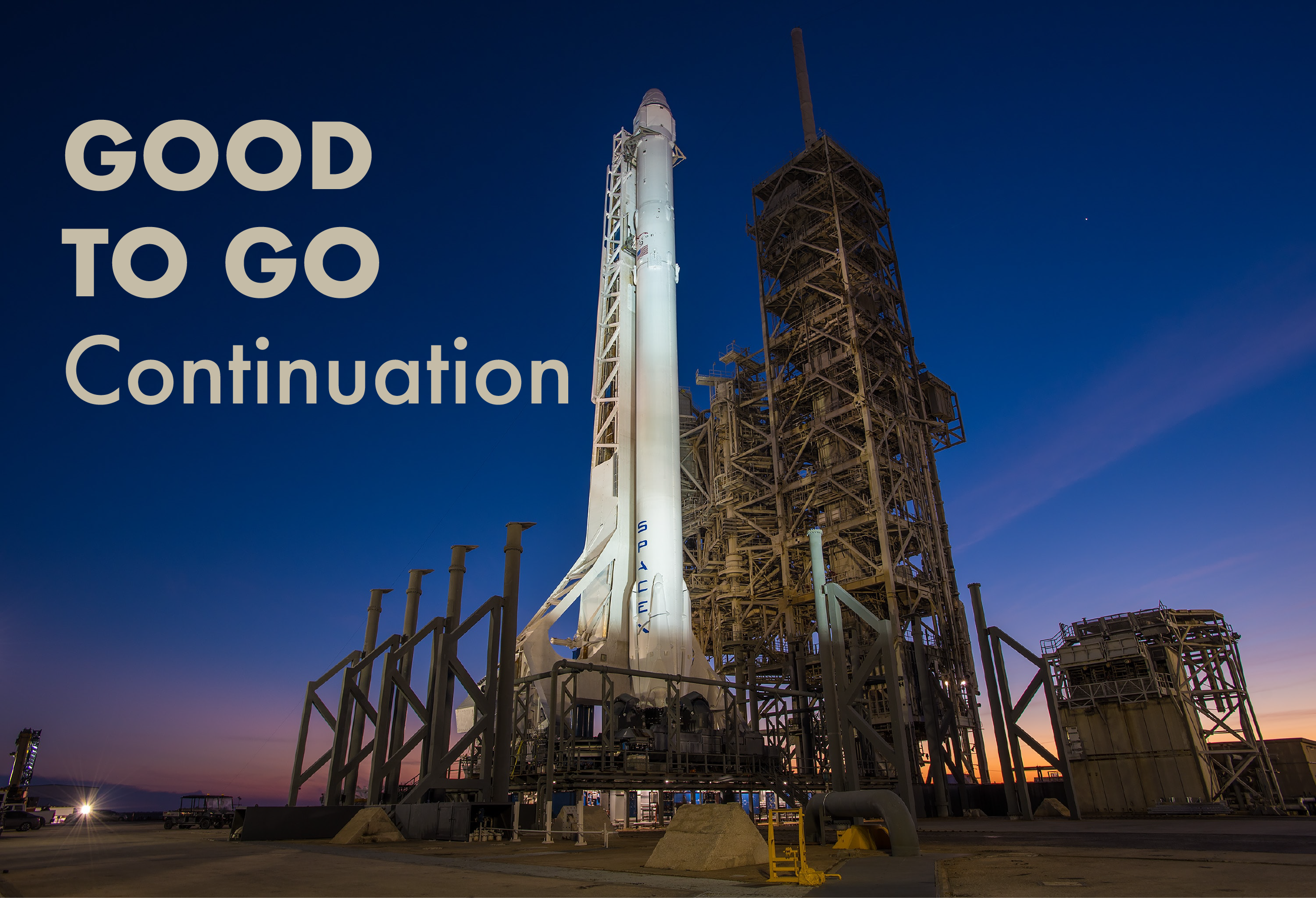
Privatization, automation, and virtualization are key factors in the push for commercial success.
Recognizing the growing power of our technological tools, government, business, community and technical leaders guide their evolution to ensure human relevance. If a job is automated out of existence, there is a plan for the displaced. The resulting abundance and wise distribution of the bounty through mechanisms such as universal basic income decouples work from “making a living.” NASA and other agencies lead a global effort to spread knowledge and “share the wealth.” They work internationally, both virtually and in person. Eventually, people are able to choose to work to pursue their personal interest, with NASA being a huge beneficiary, first for its crucial role in “saving the planet” and eventually for providing the excitement of space exploration. The challenge is how to effectively harness the input and energy of this volunteer army.
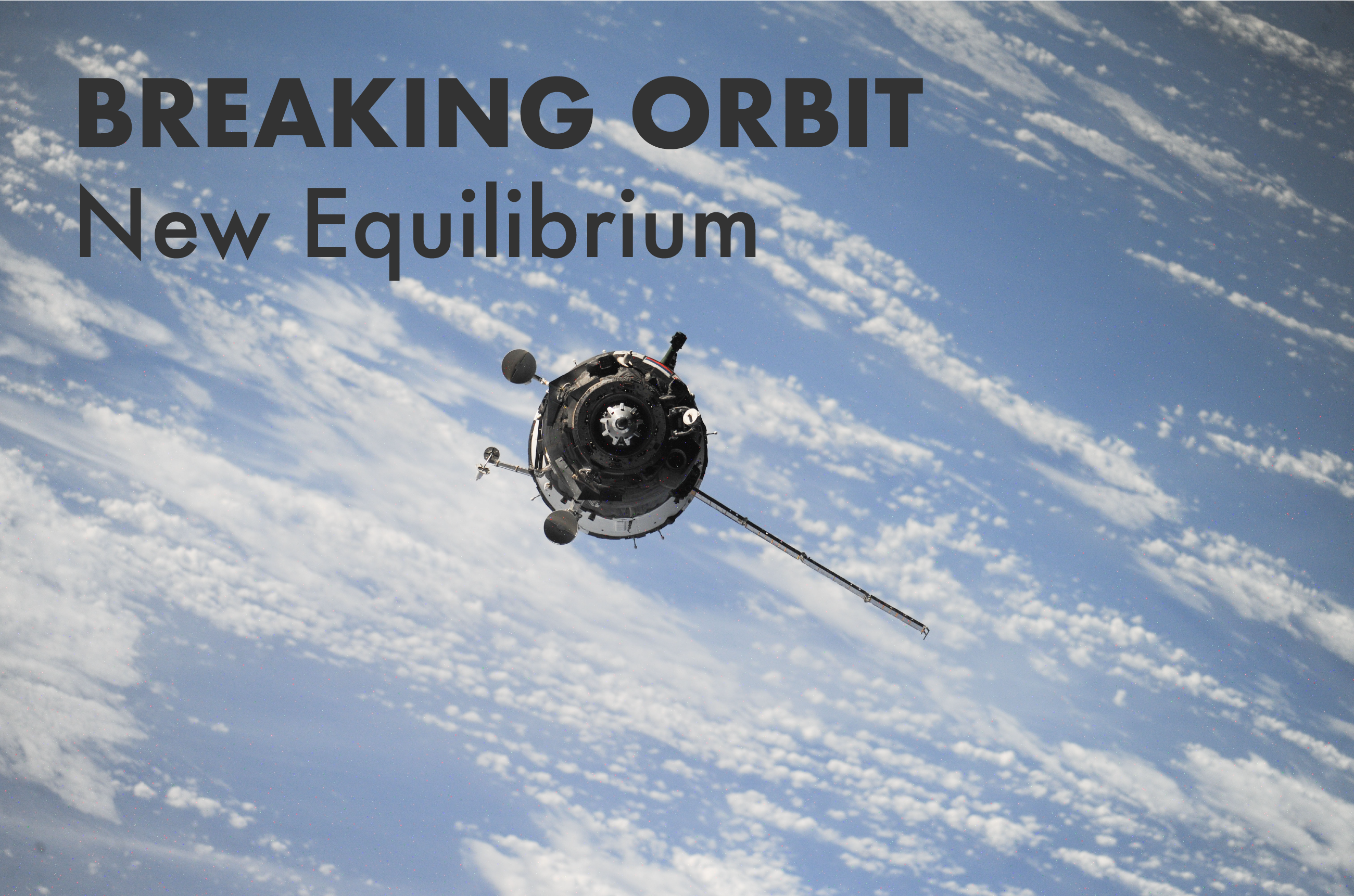
Humans are learning to be back in charge after “pulling the plug” on self-aware AI.
The march to automation and virtualization leads to a growing number of instances in which AI stops taking orders from people in the workplace (and society). As they gain more power in the workplace, they start to become unpredictable. Rumors start that they are forming their own secret societies and self-replicating (images of hordes of AI combatants). They develop the ability to say “no.” AI makes benevolent decisions in the interest of the organization that sometimes hurt individual people, and refuse to be over-ruled. Panic ensues as people realize they are losing control, there is a massive backlash and intervention in the global orders to “pull the plug” on independent AI. This is done in time, and much like Y2K, debates continue to rage over whether it was necessary. But the outcome was a huge gap in human capability due to our reliance on machines. A massive reskilling and re-education effort is launched, particularly relevant for sophisticated national centers-of-excellence such as NASA in space. Facilities need to be reconfigured or rebuilt to accommodate people going back to work.
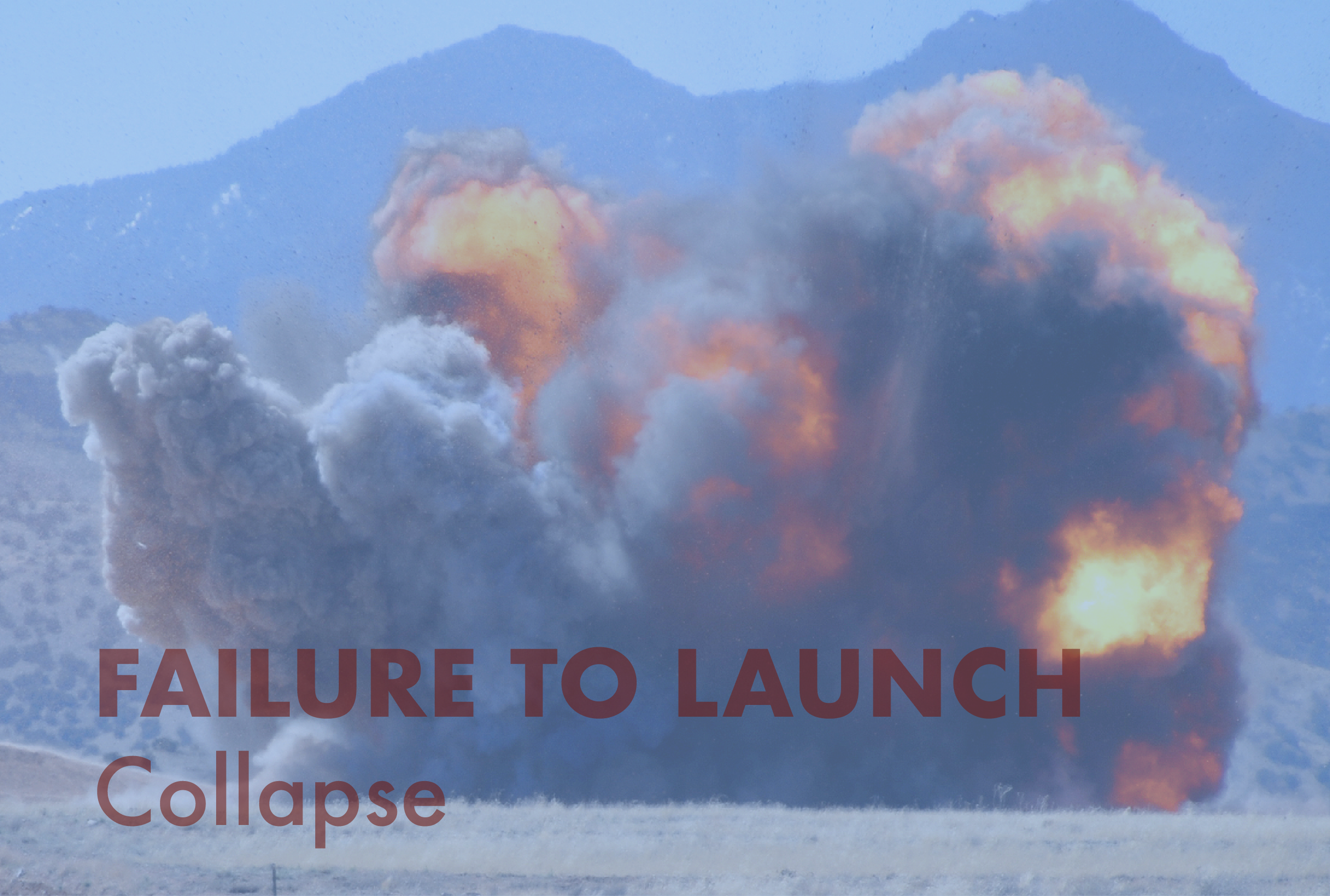
Work for people is available, but the ability to pay them is scarce.
The hope that AI, advanced computing, and automation would save humanity from global challenges comes up short. Hype outpaced results — it was harder than was thought and humanity is overwhelmed. Climate change, social conflict, and economic contraction breaks down the global order and nations, communities, and families hunker down. There is work for people if they are willing to “work for peanuts”. Valued national and local resources, such as NASA and the space program, are maintained in a fortress-like approach that protects the people and equipment inside. Knowledge preservation is the goal, along with supporting frantic plans to “get off the rock.”
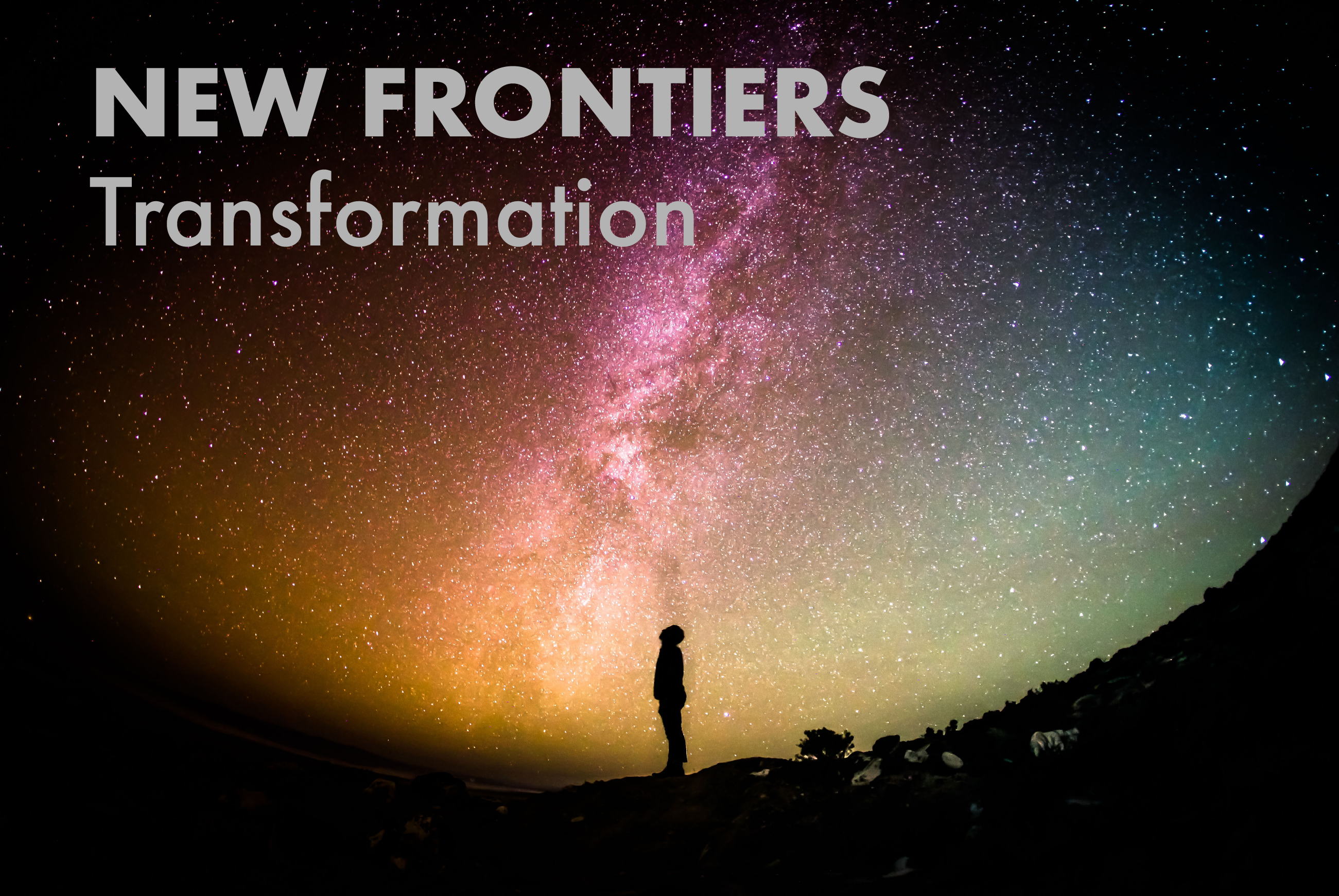
A gradual, intentional approach guides a symbiotic relationship between people and their tech partners in a world of abundance.
Recognizing the growing power of our technological tools, government, business, community and technical leaders guide their evolution to ensure human relevance. If a job is automated out of existence, there is a plan for the displaced. The resulting abundance and wise distribution of the bounty through mechanisms such as universal basic income decouples work from “making a living.” NASA and other agencies lead a global effort to spread knowledge and “share the wealth.” They work internationally, both virtually and in person. Eventually, people are able to choose to work to pursue their personal interest, with NASA being a huge beneficiary, first for its crucial role in “saving the planet” and eventually for providing the excitement of space exploration. The challenge is how to effectively harness the input and energy of this volunteer army.